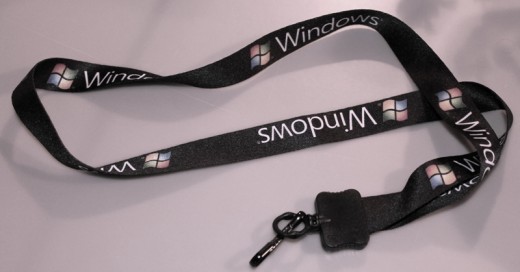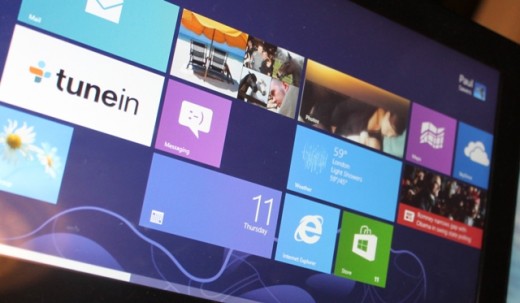![Windows 8 and the app economy: Microsoft’s vying for iOS and Android developers [Interview]](https://img-cdn.tnwcdn.com/image?fit=1280%2C720&url=https%3A%2F%2Fcdn0.tnwcdn.com%2Fwp-content%2Fblogs.dir%2F1%2Ffiles%2F2012%2F10%2FW8AppStore2.jpg&signature=4a46a760225d044fb58404834020b0de)
It has been a long time coming, but Microsoft’s omnipresent operating system is getting a major lick of paint for the launch of Windows 8 on October 26.
The Redmond-based computing giant’s new offering has already been available in various pre-launch guises, however, with the Developer Preview version rolling out in September last year, followed by the Consumer Preview (February 2012), and Release Preview (May 2012). Then, on August 1, Windows 8 was released to manufacturing (RTM), with all the major creases ironed out. In theory, at least.
But with such a gradual path to launch, opinions have already been formed in many circles – it’s fair to say that the consensus has been rather lukewarm, with perhaps a slight leaning towards negative. What Microsoft is attempting to do is rethink Windows for the 21st century, touchscreen generation, reeling in big changes to the interface and navigation.
We’ll not dwell too much on these changes here, but by way of the briefest of recaps, a whole new design language is being tapped by Microsoft for Windows 8 as it borrows its own Metro principles first introduced in Windows Phone 7. This, in turn, heralds a whole new Start screen (yup, the traditional menu’s gone) accompanied by the Windows Store where users can download apps – similar to how they would with a mobile app store, but for their computer.
Indeed, Windows 8 is all about the hybrid – the same operating system will be used regardless of whether you’re using a good old-fashioned mouse and keyboard, or screen-tapping one of the new-fangled Windows 8 touchscreen slates.
It’s against this backdrop that The Next Web ducks behind the scenes at Microsoft Towers to speak to someone who’s heavily involved in flying the flag for Windows 8.
 Meet Anand Krishnan
Meet Anand Krishnan
Anand Krishnan has been working at Microsoft under various banners for eight years, but in April this year Krishnan took on a prominent role as Senior Director, Developer & Platform Evangelism, for Microsoft UK. A key tenet of his role is working with and building the Windows 8 app development community.
Krishnan and his team work with developers, designers, creatives, students, startups, enthusiasts and technology professionals of any sort. The only real prerequisite is a desire to build apps for sale in the Windows Store.
This is pivotal to Microsoft’s vision for its new operating system – it needs quality apps in there, and to get those quality apps it needs people making them. Irrespective of your opinions on Microsoft, Windows 8 or anything else related to the computing giant, there is little doubt that there is a pretty big incentive for developers.
But before we focus too heavily on Windows 8 apps, we need to look at Windows 8 for context.
Windows 8 and the “addressable market”

“We passionately believe that Windows 8 will change things,” explained Krishnan during a 45-minute chat last week. “What I mean by that is a couple of things. One is the definition of what we call a device, which in our standard jargon means a phone or a tablet in a specific form factor, will change. And how people use them will change. With that will come a redefinition of what we consider to be the addressable market when we discuss ‘applications and devices’. This creates the largest application marketplace opportunity to date in terms of addressable users, reach and monetization per application.”
In the mobile sphere, forget Windows Phone 7 or 8, iOS and Android rule the roost so it’s not quite so easy for Microsoft to tempt developers on board on those platforms alone. But in computer land, well, Windows has been the dominant operating system for years. The target market for would-be Windows developers is unspeakably huge.
“The other part of this, is we’ve always had a long history of developers, and we’ve tried to bring that same lens to Windows 8,” continues Krishnan. “We like to think it’s the most developer-friendly platform out there. Windows has always had different ways to work with the operating system for developers, and that will continue. You can be a C and C++ guy and have a home. Or HTML and JavaScript and those will run natively too.”
Swiping and typing
Any discussion around Windows 8 has to involve the word ‘hybrid’ at some point, with its two-pronged approach raising many eyebrows.
As a hardened Windows-user who has been using Windows 8 sporadically for a couple of months now, I can’t say I’m completely taken by the new set-up…I certainly don’t hate it, but I’m not getting the ‘wow’ factor yet either. But I’m still using Windows 7 for the majority of my working day, and switching to a Windows 8 machine for casual use in the evenings and weekends, so I’m not neck-deep in the new OS yet.
There is a lot to be said for completely adopting the new world order, and leaving the old one behind – then all the new actions and maneuvers will become second nature a lot quicker. I’m not one to shirk away from emerging trends and technologies, so I’ll be persevering with Windows 8 long into the future.
With Windows 8, Microsoft is attempting to reposition itself as a leader rather than a follower. For years it was a leader, but then got complacent and was blindsided by the likes of Google and Apple. If the Redmond-based company has learnt anything from the past decade, it’s that it can never rest on its laurels. But has it “innovated” for the sake of innovation with its latest Windows incarnation? Do people want ‘hybrid’, and is it trying to force something upon its user-base that, quite frankly, it doesn’t want?
“When we think about devices, we think about phones and tablets,” says Krishnan. “We’ve tried to take a big step back, and ask ourselves why? And one of the big reasons is software, which sticks to a certain form factor, and the hardware kind of arranges itself around that as a consequence.”
With Windows 8, Microsoft is attempting to cater for everyone’s way of working – at home, in the office, on the bus, as well as personal preferences such as keyboard/mouse over touchscreen. “The question we asked ourselves is, ‘should devices accommodate this?’. Or can they accommodate this? We say absolutely…and this is one of the key principles behind Windows 8.”
So Windows 8 wants to be everywhere, on every device and computer in the land. And here’s the thing – whether you like it or not, it will succeed on this front because it has such a massive PC market share. When computers start shipping with Windows 8 later this month, you won’t have a choice. If you’re a technophile, you’ll likely see the potential of Windows 8 and give it a good go, but if you just like what you’re used to, then there could be a lot of upset PC-buyers over the next few years.
But it’s too easy to look at things as the market lies today – touchscreens still largely belong to the mobile realm, in smartphones and tablets. The whole landscape is changing, and while there will likely be a big transitional period, five years down the line when ALL laptops and perhaps even desktops have touchscreen functionality as standard, it will be a different story.
“Touch is a first-class citizen with Windows 8, and it’s a very intentional move,” says Krishnan. “It’s not the only citizen, but we want it to be an experience that supports full touch, and also supports keyboard and mouse and allows you to go back-and-forth if that’s what you choose to do. You pick a form factor that lets you work the way you want.”
What Microsoft is betting on – nay, what Microsoft is enabling – is a much broader range of devices built with touch in mind. With Microsoft going down this route, it opens up a whole new range of possibilities for manufacturers – it could be a slate, a dual laptop/tablet style device, or a rigid desktop machine that never moves from its position in your office. We’ll start seeing touch in many more machines in the coming years.
The Windows 8 shift
It’s worth noting that October 26 isn’t D-Day, not a great deal will change when Windows 8 officially rolls out. It will take years for Windows 8 to catch up with the incumbents – Windows 7 and XP. Indeed, Windows 7 only just overtook XP in terms of market share last month (the less said about Vista the better). That’s three years. So Microsoft has quite a bit of breathing space with Windows 8.
“Our base is Windows users worldwide – which is north of 1.2bn,” says Krishnan. “You can make the point that that’s across multiple versions of the OS, hardware and so on. But an interesting subset of that figure is that more than 600m people are running Windows 7 – every one of those machines can run Windows 8. And every one of those users has the ability to install Windows 8 for £24.99 (UK price). We see that as one big install base of users, that are already accessible at the right price-point. And we’d like to see them step up.”
For me, I’m not convinced too many people will upgrade to Windows 8 beyond the early adopters and techheads. I think Microsoft’s biggest sign-up base – by some distance – will be those shoehorned onto the new operating system when they upgrade to a new machine. To avoid the headache of learning a new operating system, or downgrading back to Windows 7, then there could be a last minute rush of folk buying new PCs in the build up to October 26.
It has been estimated that 400m Window PCs will be shipping in the next year, according to Krishnan. Granted, not all will be running Windows 8, but it’s likely that the majority will – and if you throw however-many-million users who choose to upgrade into the mix, then this is indicative of how lucrative this market is for would-be developers in the near future.
The Windows 8 App economy: What can developers expect?

My one big gripe with the Windows Store is this – when you install an app, they can’t easily be given shortcuts from the desktop, or pinned to the taskbar for easy access. You have to go in through the Start screen, or search. It seems Microsoft want users to get in to the habit of entering the Start screen. But this, maybe, I can get used to.
At launch, the Store will be available in more than 230 markets, covering 100 languages. In terms of developing apps, it’s open to individuals and companies in 120 markets. It has a massive reach. But what about monetization? Developers aren’t going to switch from other platforms for the good of their health, right?
“Most of the industry has a 70%/30% split, which is what we offer,” explains Krishnan. “But once you hit $25,000, this shifts to an 80%/20% split. With in-app purchasing, if you use your own back-end – which you’re allowed to do – you keep 100% of the proceeds.”
Developers have the option of providing paid downloads, trials, feature-based trials or time-based trials. And interestingly, the Windows 8 app store will also be hitting the Web shortly, which will open up the potential reach significantly.
For example, if you’re searching for a TuneIn desktop app for Windows 7, you won’t find one, but Google (or Bing) might just tell you that there’s a TuneIn Windows 8 app in the Store. So this is an important step, making them discoverable through search engines.
“Most of our ecosystem understand that we’re going to go to market with a pretty big push,” explains Krishnan. “That, combined with the 400,000 that have been attending our developer camps, means there’s a level of urgency around getting into the Store in time for the big push. A lot of our smaller developers just want to be there…it’s about discoverability. Getting the customer to find your app, and install it, is half the game. Getting them to put the data into it and pin it to their start screen, that’s three-quarters of the game. Most people never make it to the point of finding the app – so this first wave with the publicity, and the pay side of things, that’s what driving urgency around it.”
Naturally, it’s in Microsoft’ interests to be talking Windows 8 up as we approach the launch date…I wouldn’t expect anything less. One of the points Krishnan hit on related to the recruitment of new Windows 8 developers which, let’s face it, it really needs. And one of the key developer demographics it’s seeing taking an interest at Microsoft events, is those already working on the likes of iOS and Android. So could we really start seeing a migration?
“We get the group of people [at its developer events] that are Windows developers, they know Windows programming, and they come along with an interest in trying to figure out how to take that and translate it into device apps,” says Krishnan. “We also get device app developers, or ‘device application builders’ – they’re typically on iOS or Android. They’re coming to see what the opportunities are. Also a lot of the Web development world are now looking for ways to take their skills and apply them to this. For the first time, they have a platform they can run natively on, and that’s what excites them.”
Only time will tell if we do start seeing a gravitation towards the Windows 8 platform, but there is clearly money to be made there so it wouldn’t be all that surprising if we saw at least some shift in that direction, though maybe a little further down the line.
The final countdown

Personally, I’ve worked places where merely upgrading from Microsoft Office 2003 to 2007 has caused a near mutiny in the office, so I’ll be curious to see the reactions once Windows 8 is rolled out to the wider public. People don’t like change, and this is clearly the biggest change to the Windows’ set-up in a long time.
As we’ve noted repeatedly, Windows 8 has one massive factor playing in its favor, something that few other brands attempting such a shift in their core product offering have. And that factor is users. Lots of them.
Similar to when Google goes down different roads, as it did with Google+, conceiving of a whole new way of doing things is made infinitely easier if you have a ready-made user-base to tap into. Microsoft has this, and it’s for this reason that it will – eventually – tempt a lot of developers on board, something it hasn’t quite been able to do with Windows Phone. If anyone can succeed with a hybrid touch-based operating system on a desktop computer, Microsoft can.
You could argue that the dawn of the mobile app industry offered similar opportunities, but that didn’t have the same widespread, mass user-base as this. The app economy has taken time to develop, and only now are we seeing smartphones edge older-fashioned feature-phones into oblivion. There are hundreds of millions of Windows users, and we now know beyond question that the concept of little colorful, square icons that launch functional applications that do weird and wonderful things, is a winner.
The Next Web already has a Windows 8 app in the Store, and there’s also the built-in apps from Microsoft such as Bing, which should be updated prior to launch. We’re not sure how many apps are actually in the Store, but it could be around the 2,000 mark – as our very own Alex Wilhelm notes. Wilhelm also says that no smartphone platform can survive with a weak app pool, but this isn’t something Windows 8 necessarily has to worry about. People will be using Windows 8 anyway…it’s the default operating system for most of the computer-using world, so it can afford a slower bedding in period as it builds its armory of apps.
Get the TNW newsletter
Get the most important tech news in your inbox each week.
 Meet Anand Krishnan
Meet Anand Krishnan